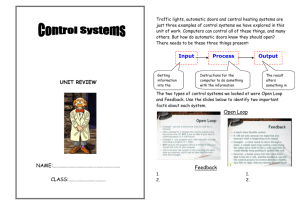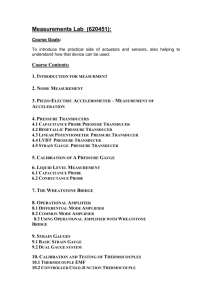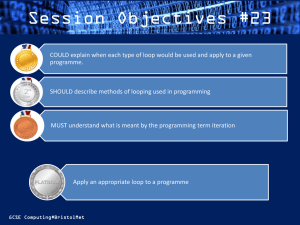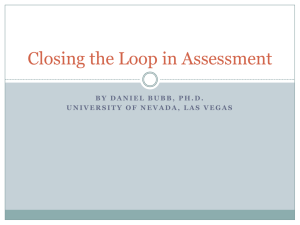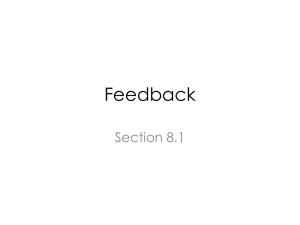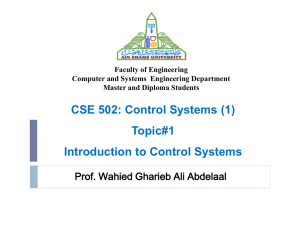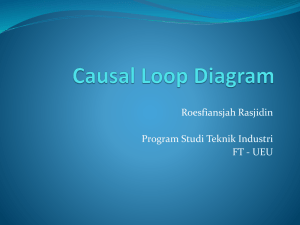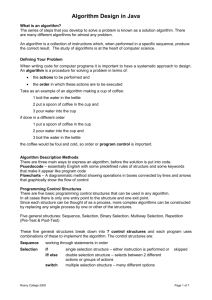Control Systems
advertisement
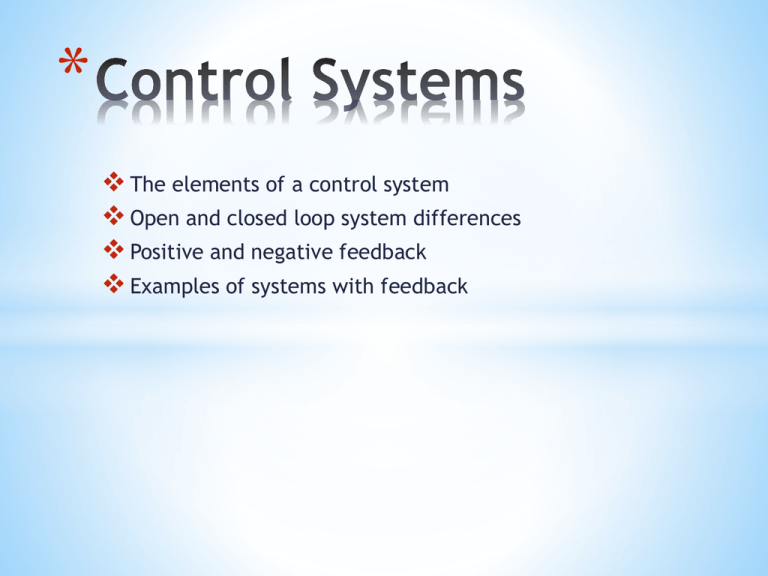
* The elements of a control system Open and closed loop system differences Positive and negative feedback Examples of systems with feedback * Classic closed loop control * * Reference input compares the feedback signal with a set reference signal (usually a voltage level) Depending on the output of the reference section, the control element will be responsible for adjusting the parameter of interest. For example if the liquid in a plant is too cool, the control element will provide more power to the heating elements within the plant until the liquid temperature until it meets the reference point] Feedback element, a part of the signal is fed back to the reference input (usually a differential amplifier and comparator) so that the control system can monitor and adjust the controlled parameter to meet the desired pressure, temperature, speed or level * * An example of an open loop control system is your garden variety kettle * The operator fills the kettle * The operator switches the kettle on * The water reaches boiling point * A thermostat (the control element) switches the kettle off * Without further interaction nothing else happens * * Open loop control systems are good for applications that require set parameters * For example we always want the kettle to reach 100 degrees and then switch off * If we want a motor to drive a constant load at a given speed (all the time) then open loop control works well * Open loop control is usually simpler to implement, is cheaper and easier to maintain than closed loop control * * The major difference between open and closed loop control is that in a closed loop control arrangement, the system is constantly monitoring the output of the system to ensure that it matches the reference signal and that the reference signal can be changed at any time usually by a computer program. * * At home probably the best example is a washing machine. * Try to make a list of all the functions that would need to be controlled by a washing machine. State whether you think they are open or closed loop controlled. * Water level Water temperature Program time Motor speed Machine Safety (Door catch) Machine Malfunction * * The output of the machine/plant/process can be arranged to provide an electrical signal * This signal can be either digital (after ADC) or it can be analogue * Digital signals will usually be read by a microcontroller or microprocessor * Analogue signals will usually be connected to some type of differential amplifier * V Vout =R2/R1(V2 – V1) t * * In control systems positive feedback is used to increase the difference between the reference value and the feedback signal * Therefore in our differential amplifier example if positive feedback is used V2 will become larger than V1, or the difference between V1 and V2 will become smaller. It just depends which way around the signals are connected * Error signal = reference value + feedback signal * * Error signal = Reference value – Feedback signal * * Consider the amplifier shown earlier * If the reference signal is connected as V2 and the feedback as V1 * Imagine we are controlling the temperature in a space * What happens to the feedback signal as the temperature increases? * How does this affect the output of the differential amplifier * If the feedback signal decreases what happens to the output * Remember ideally V2 = V1 for system balance
